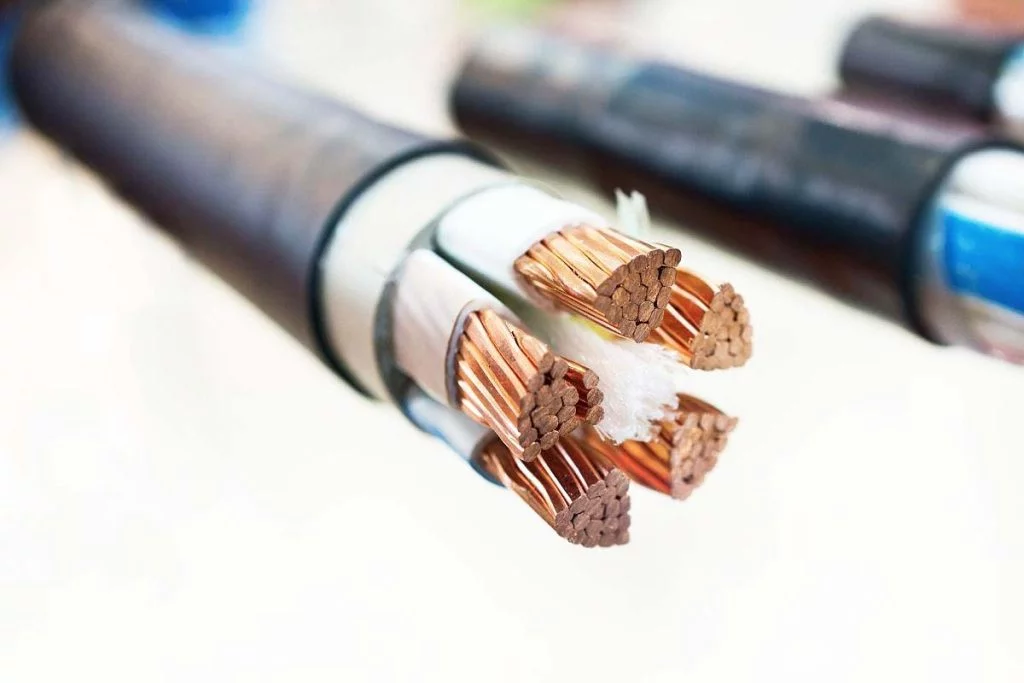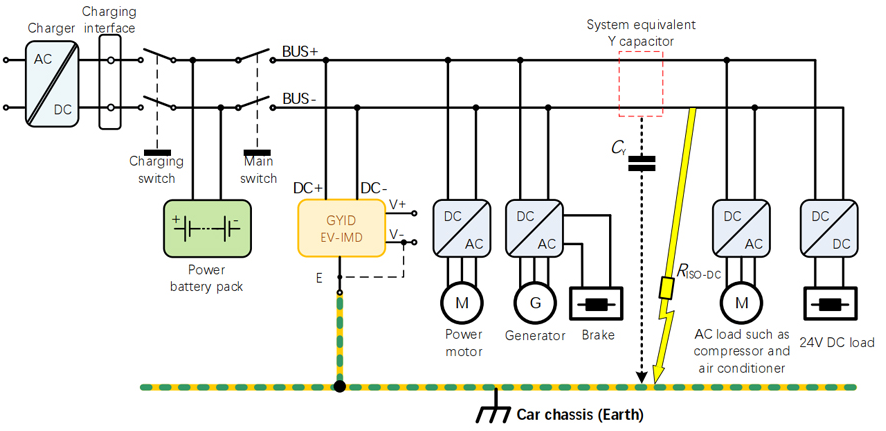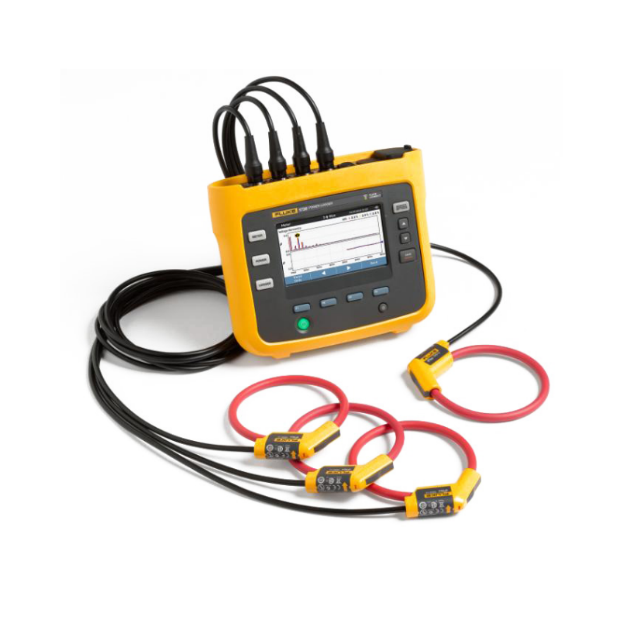Abstract: This article will introduce MCB construction from the inside and brands to help you understand MCB construction and working.
MCCB Construction Overview
The MCB construction consists of a solenoid magnetic tripping device and a bimetallic thermal tripping device. The magnetic trip device is actually a magnetic circuit. When normal current flows through the line, the electromagnetic force generated by the electromagnet is less than the tension of the spring, forming a reaction force. The armature is not drawn by the magnets, and the circuit breaker operates normally.
When a short circuit fault occurs in the line, the current exceeds several times the normal current, and the electromagnetic force generated by the electromagnet is greater than the reaction force of the spring. The armature is attracted by the electromagnet and drives the free-tripping mechanism through the transmission mechanism to release the main contact. The main contacts separate and cut off the circuit under the action of the opening spring to protect against short circuits.

The main component of the thermal trip device is a bimetallic sheet, which is generally made of two different metals or metal alloys. One characteristic of metals or metal alloys is that when heated, the volume changes of different metals or metal alloys are inconsistent after expansion. Therefore, when they are heated, a bimetallic sheet composed of two different materials, metals or alloys, it will will bend to the side with a low expansion coefficient, and use the bending to push the tripping rod to rotate and perform tripping actions, thereby achieving overload protection. Since overload protection is achieved through thermal effects, it is also called a thermal tripper.
MCB Construction of Some Brands
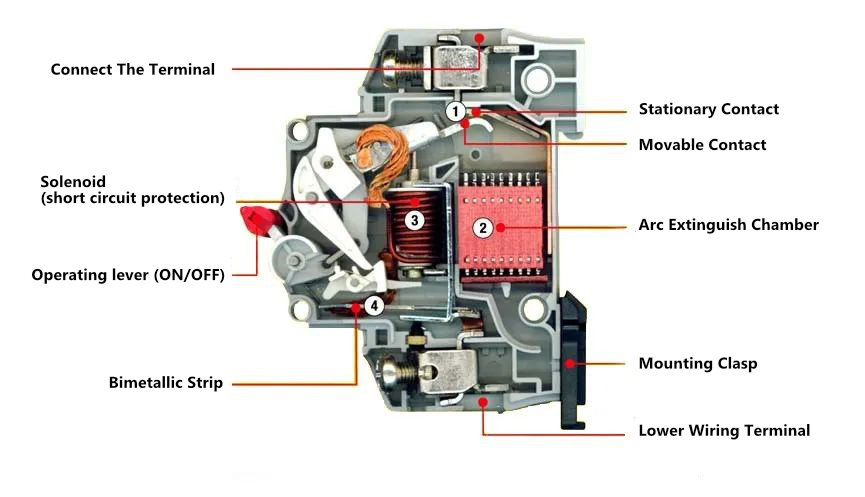
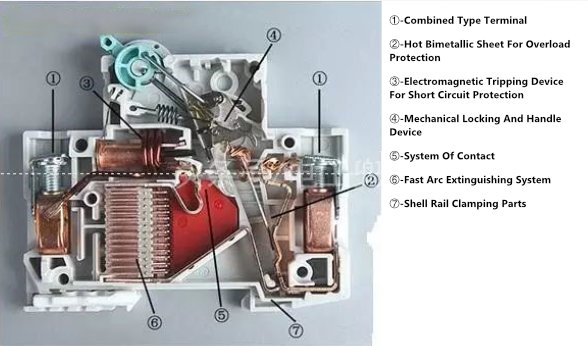
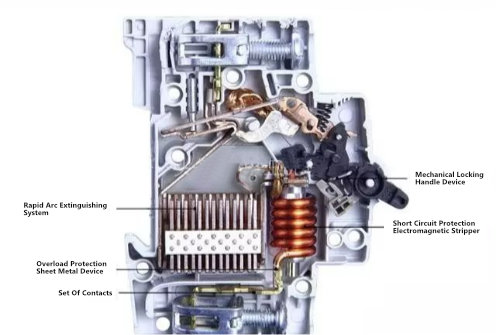
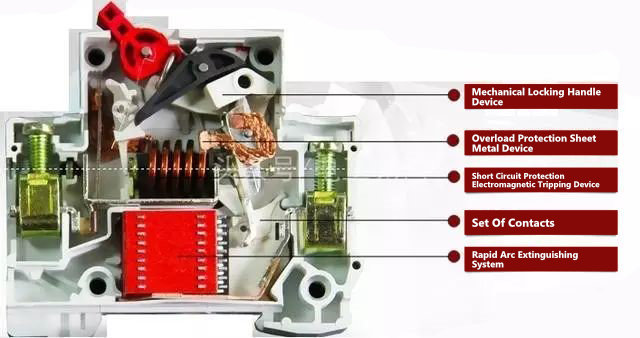
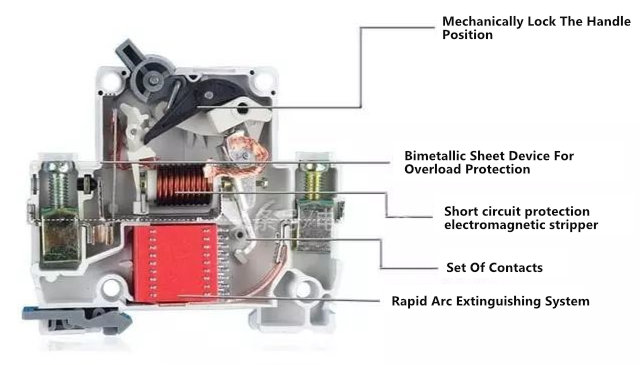
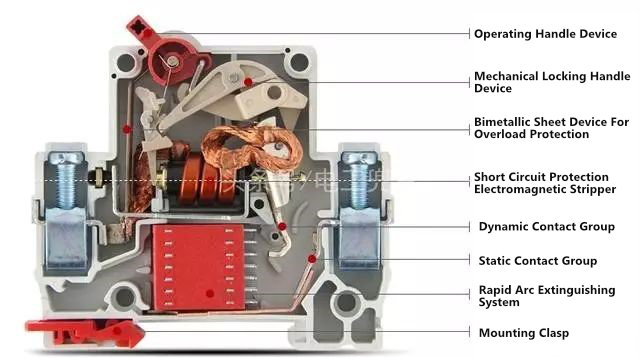
MCB Internal Construction
This part will introduce the internal miniature circuit breaker construction, taking a single-pole miniature circuit breaker as an example.
Miniature circuit breaker tripping mechanism
The diagram below illustrates the tripping mechanism of a miniature circuit breaker. The position of the circuit breaker contacts and knob can be easily seen in both the “ON” and “OFF” states. As shown in the figure below, in the ON state, the moving contact contacts the fixed contact at the contact position.

The current path in the ON state is shown in the figure below. The live wire is screwed onto the input terminal and current flows from the input terminal to the fixed contact which is in contact with the input terminal and then the current moves to the moving contact (because in the ON state, it is touching the fixed contact). The moving contact is connected to the solenoid coil of the solenoid valve by a thick wire. The current from the automatic contact enters the solenoid coil. Finally, it reaches the output, where it is collected by the line’s neutral conductor.

